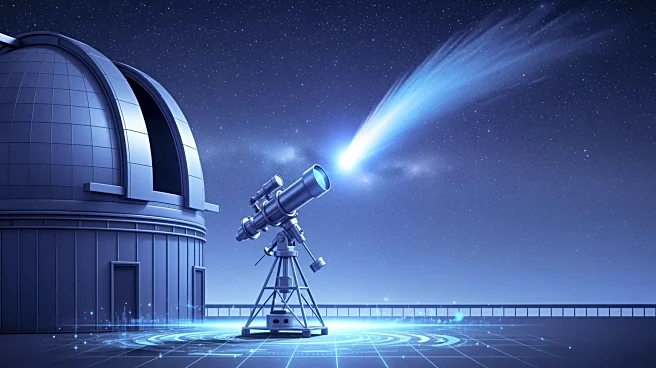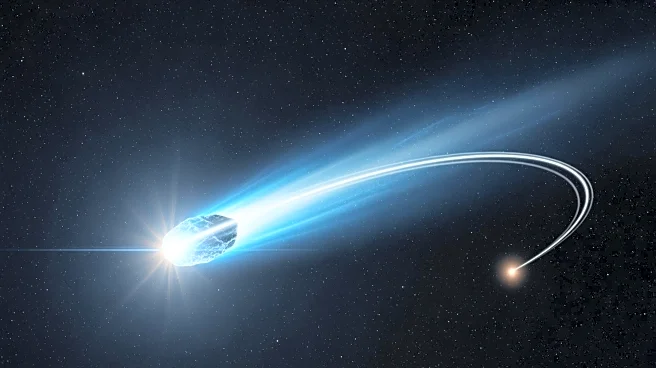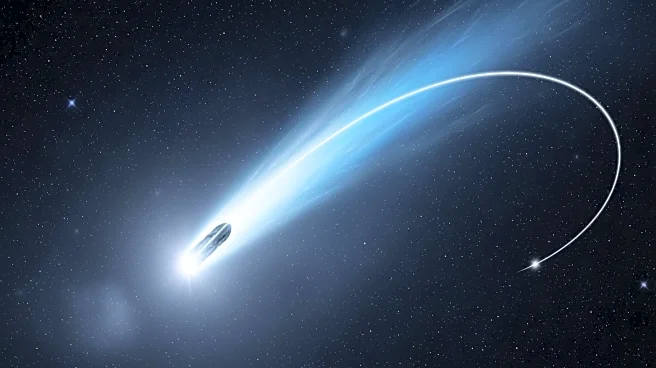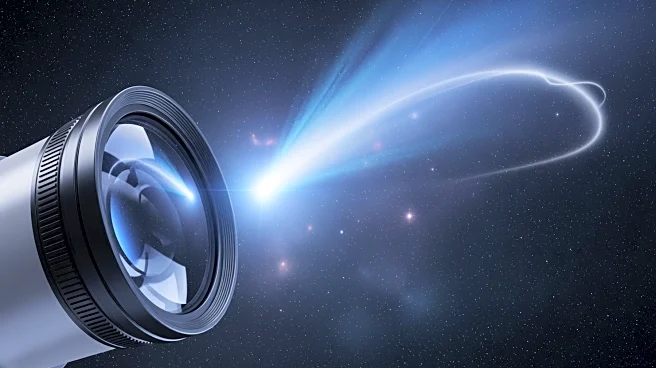What's Happening?
The European Space Agency's ExoMars Trace Gas Orbiter has achieved a significant breakthrough in predicting the path of comet 3I/ATLAS with ten times greater accuracy than previous estimates. The spacecraft observed the comet as it passed close to Mars,
allowing scientists to triangulate data from Mars and Earth-based observations. This improved trajectory prediction could have important implications for planetary defense against comets and asteroids.
Why It's Important?
The ability to accurately predict the paths of comets and asteroids is crucial for planetary defense. The breakthrough achieved by the ExoMars Trace Gas Orbiter demonstrates the potential for using spacecraft in different locations to enhance trajectory predictions. This could lead to improved strategies for protecting Earth from potential impacts by celestial objects.
What's Next?
The comet 3I/ATLAS will continue to be observed by other spacecraft, including the Jupiter Icy Moons Explorer (JUICE), which is expected to provide further insights into the comet's behavior. The data collected by ExoMars Trace Gas Orbiter will contribute to ongoing efforts to improve planetary defense strategies.
Beyond the Headlines
The success of the ExoMars Trace Gas Orbiter highlights the importance of international collaboration in space exploration and planetary defense. The use of spacecraft in different locations to enhance trajectory predictions could become a standard practice in future planetary defense efforts.













